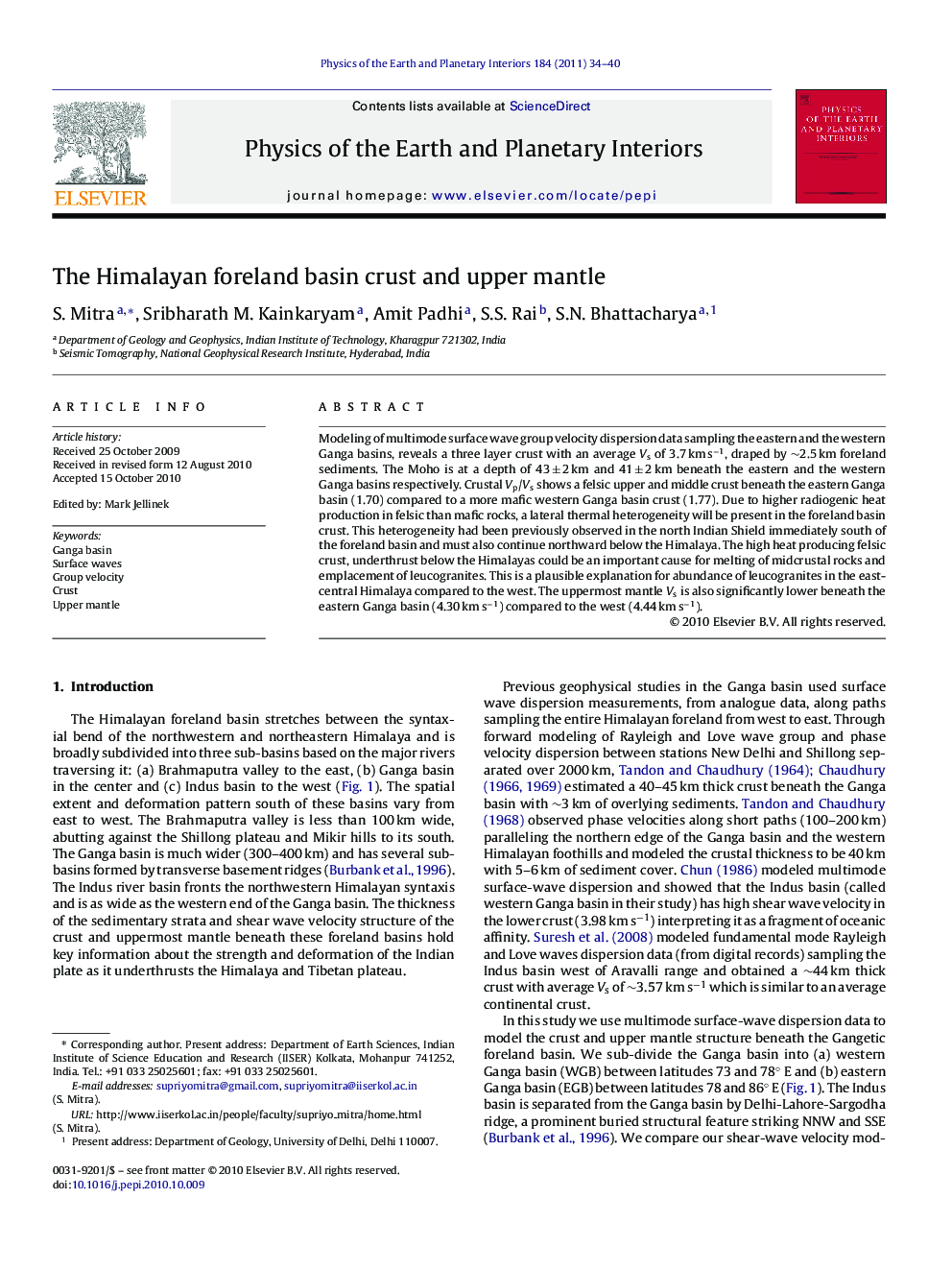| Article ID | Journal | Published Year | Pages | File Type |
|---|---|---|---|---|
| 4742025 | Physics of the Earth and Planetary Interiors | 2011 | 7 Pages |
Modeling of multimode surface wave group velocity dispersion data sampling the eastern and the western Ganga basins, reveals a three layer crust with an average Vs of 3.7 km s−1, draped by ∼2.5 km foreland sediments. The Moho is at a depth of 43 ± 2 km and 41 ± 2 km beneath the eastern and the western Ganga basins respectively. Crustal Vp/Vs shows a felsic upper and middle crust beneath the eastern Ganga basin (1.70) compared to a more mafic western Ganga basin crust (1.77). Due to higher radiogenic heat production in felsic than mafic rocks, a lateral thermal heterogeneity will be present in the foreland basin crust. This heterogeneity had been previously observed in the north Indian Shield immediately south of the foreland basin and must also continue northward below the Himalaya. The high heat producing felsic crust, underthrust below the Himalayas could be an important cause for melting of midcrustal rocks and emplacement of leucogranites. This is a plausible explanation for abundance of leucogranites in the east-central Himalaya compared to the west. The uppermost mantle Vs is also significantly lower beneath the eastern Ganga basin (4.30 km s−1) compared to the west (4.44 km s−1).
